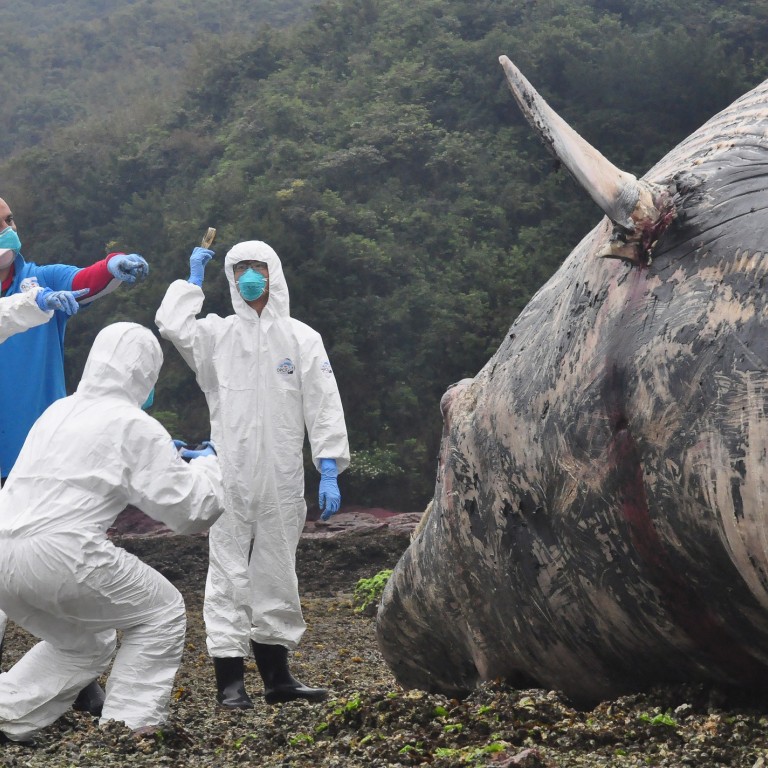
Skeleton of dead whale washed up in Plover Cove to be preserved
The skeleton of a dead whale found stranded in shallow waters in the New Territories’ Plover Cove Country Park will be preserved and used for educational purposes by Hong Kong’s City University.
The bloated carcass of the 10.8 metre-long whale was in the process of being chopped up on the beach on Thursday by experts from City University and Ocean Park.
Repeated enquiries from the over any potential risk to public health were unanswered by City University on Thursday.
A spokeswoman at the Agricultural, Fisheries and Conservation Department told the Post that City University had approached the department and “expressed interest in making a skeleton specimen from the whale carcass for educational use”.
It is unclear whether the skeleton will be on display to the public or whether it will be used for other educational purposes.
The Ocean Park Conservation Foundation said in a statement that the foundation’s Cetacean Stranding Response Team, together with veterinarians and a marine mammal team from Ocean Park, had “investigated a whale stranding case at Hung Shek Mun in Taipo…after a detailed inspection, [the whale] is believed to be either a fin whale or Omura’s whale, measuring 10.8 metres in length.
“There were many wounds found on the whale and the most severe one was a fracture on the right pectoral fin. Vets from Ocean Park believe that the cause of death may be related to human activities.”
Neither City University nor Ocean Park would confirm to the the details of how they would process the carcass to create the skeleton specimen.
However in a similar whale stranding case in the US in 2004, scientists at the North Carolina Maritime Museum buried the carcass of the 10.2-metre-long sperm whale, and three years later began the process of exhuming the skeleton and recovering the bones.
Over the next three years the bones were processed with a specialised vapour degreaser to remove oiliness, kill bacteria, remove bone odour and make the bones lighter and more uniform for display.
They were also soaked in weak hydrogen peroxide solution to further kill bacteria and dissolve any remaining flesh, and dried, before the bones were assembled together through welding and casting resin, while also creating silicone replicas of damaged bones and teeth. The assembly was finally mounted on display at the museum in 2012.

